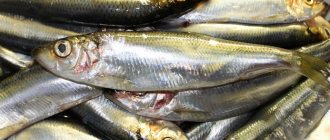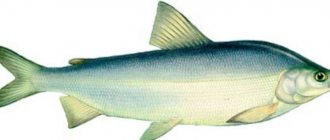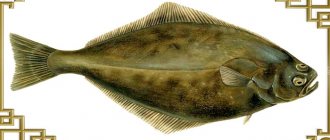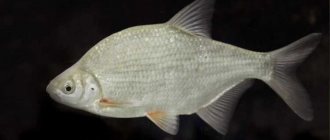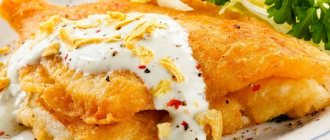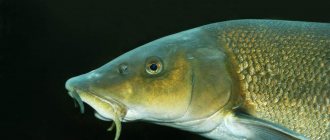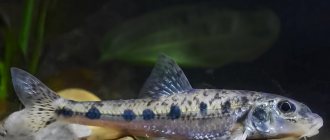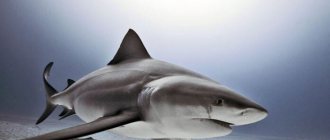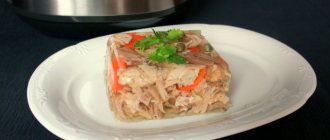The Black Sea is home to 184 species and subspecies of fish, of which 144 are exclusively marine, 24 are anadromous or partially anadromous, 16 are freshwater.
In recent years, the ichthyocenosis of the Black Sea has been replenished by the Far Eastern mullet Mugil so-iuy Basilewsky, which has successfully acclimatized in the Azov-Black Sea basin. Marine fish species of the Black Sea are usually divided into 4 groups: permanently inhabiting (Black Sea anchovy race, Black Sea horse mackerel, Black Sea sprat, Kalkan); wintering in the Black Sea, but spawning and fattening in the Sea of Azov (Azov race of anchovy, Kerch race of herring); wintering and spawning in the Black Sea, but feeding in the Azov Sea (mullet, Black Sea mullet); developing the Black Sea as a spawning and feeding area, but wintering or spawning in the Marmara and Aegean Seas (bonito, mackerel, some species of sea crucian).
The number of most Black Sea fish depends not only on the conditions of their existence in the Black Sea, but also on the conditions of spawning, feeding or wintering in adjacent seas, which determines the complex type of dynamics of the raw material base of the entire sea.
Black Sea laurel
Of the total number of fish, about 20% serve as commercial fish. In the 70s and 80s, the USSR produced about 200 thousand tons of fish and seafood in the Black Sea. The basis of the catch was the Black Sea race of anchovy, sprat, whiting, horse mackerel, and katran. The catch of other fish - mullet, mullet, herring, perch (smarida, sea bass, bluefish, croaker) off the coast of the former USSR is very limited due to their low numbers.
Fishery research has established that significant interannual fluctuations in the number of fish in the Black Sea are accompanied by changes in the species composition of catches. So from the late 40s to the mid 50s. In the Black Sea, planktivorous fish dominated - anchovy and Black Sea horse mackerel. Subsequently, until the 60s, the catch was dominated by
USSR catches of the main commercial fish of the Black Sea (1975 - 1990), thousand. T.
Table 1
| Year | Game fish | Total | |||||
| Anchovy* | Sprat | Whiting | Horse mackerel | Mullet | Katran | ||
| 1975 | 90,7 | 1,0 | 0,1 | 4,3 | 0,4 | 0,6 | 97,1 |
| 1976 | 214,7 | 1,6 | — | 18,3 | 0,3 | 1,4 | 236,3 |
| 1977 | 166,1 | 6,7 | — | 4,7 | 0,3 | 1,3 | 179,1 |
| 1978 | 138,6 | 22,8 | 0,5 | 0,6 | 0,1 | 1,4 | 164,0 |
| 1979 | 128,0 | 57,9 | 11,4 | 0,7 | 0,2 | 1,4 | 199,6 |
| 1980 | 139,7 | 66,9 | 2,7 | 0,6 | 0,1 | 1,7 | 211,7 |
| 1981 | 105,4 | 75,1 | 2,2 | 0,3 | 0,1 | 1,5 | 184,6 |
| 1982 | 159,4 | 56,3 | 1,5 | 1,9 | 0,2 | 1,7 | 221,0 |
| 1983 | 181,8 | 25,5 | 2,4 | 7,3 | 0,3 | 1,6 | 218,9 |
| 1984 | 204,1 | 24,1 | 4,7 | 5,3 | 0,4 | 1,5 | 240,1 |
| 1985 | 85,5 | 28,8 | 2,7 | 35,3 | 0,3 | 2,1 | 154,7 |
| 1986 | 158,7 | 43,1 | 2,7 | 2,4 | 0,33 | 2,1 | 209,33 |
| 1987 | 52,8 | 45,3 | 2,8 | 3,5 | 0,13 | 1,8 | 106,33 |
| 1988 | 195,1 | 54,1 | 2,2 | 0,4 | 0,14 | 1,8 | 253,74 |
| 1989 | 63,3 | 38,9 | 0,6 | 0,3 | 0,03 | 1,3 | 154,43 |
| 1990 | 29,0 | 47,8 | 0,3 | 0,1 | 0,03 | 1,7 | 78,93 |
| * Black Sea anchovy (anchovy) with Azov bycatch during fishing in the south-eastern part of the sea | |||||||
Since 1974, more than 95% of the catch has been anchovy, Black Sea sprat, whiting and horse mackerel. According to FAO, the total catch of the listed fish in 1971-1984. tended to increase, which is associated with the expansion of the scale of their fishing.
Black Sea flounder kalkan
Various researchers have estimated the initial stocks and production of fish in the Black Sea at 0.5-5.7 million tons and 0.25-2.9 million tons, respectively. Such a large range is associated with both the methodological approach and large interannual fluctuations number of commercial fish in the reservoir. In addition, at present, anthropogenic factors are a significant “regulator” of the number of commercial fish, which influence not only the abiotic, but also the biotic part of the Black Sea ecosystem.
The results of scientific research over the past ten years allow us to speak about the initial stock of pelagic fish (anchovy, horse mackerel, sprat) at the level of 2-3 million tons, demersal fish (merlang, katran, galkan, etc.) - 0.3-0.7 million .T. This assessment did not include information on Mediterranean migrants (bluefish, mackerel, bonito), since their migrations to the former USSR zone have practically not been observed in the last 20 years.
Gurnard
The commercial importance of the Black Sea is determined not only by fish resources, but also by significant reserves of invertebrates (mussels) and algae (Phyllophora, Cmstosira, Zoster), the size of populations and associations of which undergo significant changes under the influence of various types of economic activities.
In addition to fish, invertebrates and algae, the Black Sea is home to mammals. So, here there are three species of dolphins (white-sided, bottlenose and Azov), which have long been hunted by all Black Sea countries. The number of dolphins was previously high, and the total production exceeded 10 thousand tons per year, which led to a sharp decrease in their stocks. Since 1966, dolphin fishing has been prohibited.
The general fishing regime in the Black Sea is determined by the principles of rational use of fish resources in accordance with the state of the stocks of the exploited objects. However, due to the lack of concerted action in industrial exploitation and biological resources, problems arise in international fisheries regulation.
Black Sea anchovy (anchovy) - Engraulis encrasicolus ponticus Alexandrov
Black Sea anchovy
According to its taxonomic position, the Black Sea anchovy is one of the subspecies (geographical races) of the European anchovy. In terms of production volume, it is the most important fishing target in the Black Sea. By its origin, anchovy belongs to the group of Mediterranean invaders and, accordingly, is a heat-loving species.
The anchovy's body is elongated, slightly compressed laterally. The length of the fish is, on average, about 12 cm.
Reproduction of anchovy occurs throughout almost the entire Black Sea water area in waters with a salt content from 10-12‰ (Odessa Bay) to 17-18‰ (most of the sea area). Spawning begins in mid-May at a temperature of 14-15 0C, reaches maximum intensity in June-July at a temperature of 20-260C and ends by the end of August. Individual eggs are also found in September. Spawning occurs in the surface horizons of the sea. The individual fertility of females can exceed 50 thousand eggs. It reaches sexual maturity in the second year of life, which ensures the high reproductive capacity of the species. During the spawning period, anchovy continues to feed intensively, constantly staying in the warmest surface layer of the sea. The basis of the anchovy's food supply is made up of zooplankton organisms from the orders Copepoda, Cladocera, larvae of Cirripedia, Decapoda, Mysidacea, as well as larvae of mollusks and worms. Juvenile anchovy is characterized by a rapid growth rate - by November the average size of fingerlings reaches 70-80 mm. Typically, the proportion of yearlings in a commercial herd is 50-80%. Only in some years, characterized by low productivity of juveniles, do larger two-year-old fish predominate in the catches. Due to high natural and commercial mortality, three- to four-year-old individuals make up less than 5% of the entire population, and fish reaching a maximum age of 5 years are recorded only sporadically.
Anchovy is characterized by a decrease in growth rate, both linear and weight, with age.
The high concentration of anchovy in wintering aggregations provides a good food supply for Kalkan, sturgeon, dogfish, dolphins and seabirds, which are constantly found near schools of anchovy.
Horse mackerel
The body length of these fish can range from 22 to 80 cm. They feed on plankton and some small vertebrates that live on the seabed. The mass of an individual is usually 300 grams.
Horse mackerel leads a gregarious lifestyle, so it is convenient to catch it on an industrial scale. Fish is used in the food industry to make appetizers and snacks, as well as canned food. Its meat does not have small bones, but it contains a lot of vitamins and beneficial microelements. Not only people, but also dolphins love to feast on horse mackerel.
Length and weight of the Black Sea anchovy depending on age
table 2
| Age, years | Length, mm | Weight, g | ||||
| Average | Minimum | Maximum | average | Minimum | Maximum | |
| 1 | 82 | 55 | 110 | 4,3 | 1,5 | 10,5 |
| 2 | 120 | 108 | 127 | 14,2 | 10,0 | 16,5 |
| 3 | 127 | 124 | 13 | 15,3 | 10,3 | 18,0 |
| 4 | 134 | 129 | 141 | 17,9 | 17,0 | 20,5 |
| 5 | 139 | 134 | 155 | 18,0 | 17,0 | 23,5 |
In summer, a significant part of the anchovy population is distributed in shallow, high-food areas adjacent to the mouths of large rivers (Danube, Dniester, Dnieper) in the northwestern part and in the 5-mile coastal zones of Abkhazia and Georgia, which are also subject to a certain desalination, which contributes to high plankton productivity. In the cold season, anchovy, as a heat-loving species, reduces its distribution area, moving to the Caucasian coast of the Black Sea. It has been established that the most important factors that determine the rate of transition of anchovy from scattered distribution in the surface layer of the sea to wintering aggregations are the level of fat reserves in the body of the fish and the intense autumn decrease in water temperature. After the completion of summer spawning from late August to October, anchovy feeds intensively, which leads to the rapid accumulation of fat, which is an energy reserve for the existence of the fish in the winter.
The first signs of the beginning of the migration of the Black Sea anchovy to the south usually appear in early September, when its catches by coastal fixed seines briefly increase and cases of catching schools with trawls during the Black Sea sprat fishery become more frequent. The autumn movement of anchovy to the southern part of the Black Sea occurs mainly in a rather narrow coastal zone.
Scheme of fishing with a purse seine
The traditional areas for the formation of so-called wintering aggregations of the Black Sea anchovy are the coastal regions of Turkey from Sinop to Rize and the water area adjacent to the Georgian and Abkhaz coasts from Batumi to Sukhumi. It is in these areas of the sea, mainly at a distance of 1-3 miles from the coast, that active fishing for anchovy with purse seines occurs.
Observations have shown that the timing of the formation of dense schools suitable for fishing depends on the fat content in the body of the anchovy and the cooling of the surface of the water basin in the fishing zone.
As a rule, large individuals of 2-3 years of age have a higher fat content, which most often form the first commercial aggregations in late November - early December. Numerous juveniles of the Black Sea anchovy approach the shore and form schools at a later date - usually from mid-December to mid-January.
The winter period of the anchovy's life cycle is characterized by daily vertical diurnal patterns, which significantly influence the course of the fishery. At the beginning of winter, when the upper 40-meter layer of water remains 2-40 warmer than the underlying waters, schools of anchovy are distributed closer to the sea surface. However, in the daytime, anchovy is observed to lower by 20-30 m from the surface, which apparently reduces the possibility of the fish being eaten by aquatic predators, including birds. In general, until mid-January, anchovy remains well accessible for fishing with purse seines, which are capable of catching fish to a depth of 50-60 m. Subsequently, under the influence of intense winter storms and cold westerly currents, cooling to 8-90 and mixing of waters occurs throughout the entire 100-150-meter thickness. These conditions contribute to an increase in the length of daily vertical migrations. During the day, anchovy can descend to a depth of up to 120 m. Moreover, in especially cold winters, characterized by continuous storms, snowfalls and a drop in water temperature to 6.5-7.00 C, anchovy stops rising to the surface horizons of the sea and lies in the bottom layer. At the same time, fish mortality increases sharply.
Throughout the fishing season, the highest catches of seiners - up to 30-60 tons per seine sweep - occur in the evening and morning hours, when the density of schools at the sea surface is 200-400 specimens/m3. In the middle of the night, the concentration density decreases to 20-60 individuals/m3, which makes replacements less effective. Daytime concentrations, although characterized by the highest density - up to 500-800 specimens/m3, are rarely caught due to their deep occurrence. The disintegration of schools and the return spring migration occurs in late March - April.
When analyzing the long-term dynamics of the Black Sea anchovy population, it should be taken into account that since the beginning of the 70s, when the number of large pelagic predators in the sea sharply decreased - mackerel, bonito, large mackerel, etc. (apparently due to the deterioration of the environmental situation), stocks small short-cycle fish have practically remained only under the influence of fishing.
Accordingly, until the end of the 80s, while the number of fishing vessels (primarily Turkey) was increasing, the reserves of the Black Sea anchovy were relatively stable, and catches were gradually increasing. During this period, commercial harvest was close to optimal, amounting to about 45-50% of the commercial stock. Together with the natural decline, which mainly took place in winter, the total annual mortality, on average, was about 86% of the maximum autumn stock level.
The power (productivity) of anchovy generations, which determined the level of the commercial stock, depended primarily on the size of the parent herd. Moreover. With an excessive increase in the number of spawning fish of two to three years of age, the yield dropped sharply, which, apparently, was ensured by intrapopulation regulatory mechanisms (competition for food, cannibalism, etc.). However, in 1984, the annual catch of Black Sea anchovy by the main fishing countries of the USSR and Turkey exceeded 500 thousand tons, which corresponded to the removal of more than 60% of the total stock. Subsequently, a decline followed, both in the number of anchovy and in fishing conditions. Only in 1987, when the next large generation appeared, the state of the Black Sea anchovy resources improved. But it increased sharply again in 1988. The “press” of fishing led to another decline in the herd size.
Sea bass
Although outwardly sea perches are similar to river perches, in fact these two fish belong not only to different species, but even to different orders of fish. Fishermen call perch beaver or redhead. Indeed, it has a bright orange color. The fins of sea bass contain poisonous glands that look like needles. In case of an injection, a person experiences a slight but painful inflammation.
Sea bass is very voracious. It feeds on crustaceans, mollusks, plankton and many other marine life. Moreover, cases of cannibalism have been reported. Sometimes a perch can even eat the eggs that it itself laid! Another feature of perch is that initially they are all born female, but after about two years they begin to change their sex to male.
State of reserves and fisheries of the Black Sea anchovy
table 3
| Year | Spawning stock in May, thousand tons | Productivity of juveniles, billion tons | Prom. reserve in the waters of the USSR, thousand tons | Catch (thousand tons) | |
| All countries | USSR | ||||
| 1977 | 107 | No data | No data | 216,2 | 141 |
| 1978 | 196,5 | No data | No data | 256,6 | 116 |
| 1979 | 190 | No data | No data | 262,4 | 114 |
| 1980 | 270 | No data | No data | 368,5 | 117 |
| 1981 | 320 | 10,0 | 330 | 380,0 | 96 |
| 1982 | 150 | 7,5 | 300-350 | 429,0 | 149 |
| 1983 | 300 | 500-600 | 474,0 | 138 | |
| 1984 | 190 | 11,1 | 270 | 502,9 | 165 |
| 1985 | 150 | 7,5 | 135 | 372,5 | 70 |
| 1986 | 50 | 12,1 | 220-250 | 418,2 | 119 |
| 1987 | 100 | 20,6 | 300-400 | 364,5 | 53 |
| 1988 | 235 | 4,9 | 330-350 | 488,0 | 175 |
| 1989 | 32 | 3,2 | 150 | 280,0 | 60 |
| 1990 | 48 | 5,6 | No data | 80,0 | 29 |
| 1991 | 92 | 5,6 | There were no clusters | No data | 7 |
| 1992 | No data | 3,2 | 165 | No data | 14* |
| *in the first half of the year | |||||
The deterioration of the ecological situation occurring year after year contributed to the onset of a long-term depression in the stock of the Black Sea anchovy, which continues to this day. To a greater extent, this turned out to be due to the introduction and massive development of the ctenophore Mnemiopsis Leidy in the Black Sea, which became a serious food competitor for fish and also began to consume their eggs and juveniles. In 1989-90 The biomass of the ctenophore in August reached several hundred million tons, and according to some data even one billion tons. At the same time, the biomass of food plankton decreased to 20-50 mg/m3 (indicators of previous years were in the range of 100-300 mg/m3). The resources of the Black Sea anchovy reached their most critical state in the winter of 1990/91, when, due to the low fat content in the body of the fish, it practically did not form schools, remaining in a rarefied state. The total production volume in Georgia and Turkey was only about 21 thousand tons.
After the usual first “peak” of numbers for an invader, a reduction in the biomass of Mnemiopsis Leidy followed. So, in August 1991 and 1992. in the northern half of the Black Sea, 40.5 and 18.9 million tons were recorded, respectively. At the same time, an increase in the number and improvement in the physiological state of the Black Sea anchovy was noted. In January 1992, 165 thousand tons of anchovy were counted in Georgian waters, which were distributed in stable, dense schools. This stock level was only 60% of the average for normal years. In the future, we should expect the continued possibility of regular fishing for the Black Sea anchovy, although the presence in the Black Sea of such a serious food competitor as the ctenophore mnemiopsis does not allow the seizure in the waters of Georgia to exceed more than 40-60 thousand tons, and in the waters of Turkey 100-150 thousand. etc. Of course, it is necessary to reach an appropriate agreement at the interstate level.
Black Sea sprat - Sprattus sprattus phalericus (L)
Black Sea sprat-sprat
Black Sea sprat (below sprat) is one of the most abundant fish species in the Black Sea, its stock fluctuates in different years within the range of 200-1600 thousand tons. Previously, it was believed that sprat did not form commercial accumulations suitable for effective trawl fishing, so it was caught only with fixed seines in a narrow coastal zone to depths of 7-10 m. At the same time, it was caught in the USSR until the mid-70s. amounted to 0.5-4 thousand tons per year. Carrying out special research work made it possible to identify the presence of commercial concentrations of sprat on the Black Sea shelf. First in Bulgaria, and then from 1976 in the USSR, its specialized fishing with bottom and mid-depth trawls began to develop. This made it possible to significantly increase the catch of Black Sea sprat, bringing it to 100 thousand tons per year throughout the Black Sea, of which 23-89 thousand tons were caught in the USSR. However, since a significant part of the sprat remains scattered outside the fishing aggregations, and the appropriate fishing gear for effective catching of such sprat is not available, the stock of this object is underutilized. The annual withdrawal of sprat is, as a rule, no more than 30% of its commercial stock, with the available withdrawal being up to 44% (40% was withdrawn only in 1989).
The body of the Black Sea sprat is low, laterally compressed. The maximum height of the body is 0.15-0.18 of its absolute length (from the beginning of the snout to the end of the caudal fin). The head is narrow, elongated. Its height at the back of the head is 0.13-0.15, length 0.20-0.23 body lengths. The interorbital space is equal to 0.15-0.18 of the length of the head.
The dorsal fin is moved back and has 4-5 spiny and 11-14 soft rays. The anal fin, which begins behind the vertical of the posterior edge of the dorsal fin, has 2-4 spiny and 15-19 soft rays. The pelvic fins are located at the level of the anterior edge of the dorsal fin or slightly in front and contain 1 spiny and 6 soft rays.
Needlefish
These fish really have a specific shape. She is very thin, like a snake or a needle, and her nose is very pointed. Pipefish have neither scales nor fins. Only on the tail does it have a small outgrowth that looks like a tassel. An adult individual manages to grow up to 17-19 cm, and its weight can be 700 grams.
The back of the pipefish is usually darker than the belly. Stripes can be seen on the body.
This fish feeds on plankton, but sometimes small crustaceans appear in its diet. The needlefish is not very fast, so it spends most of its life in underwater thickets, where it can easily hide from predators.
The spawning of needlefish is interesting. Females lay eggs in a special cavity (brood chamber), which is located in the tail of the male. In this case, a male can accept eggs from several females at once. After the hatchlings develop, the chamber is separated from the male and destroyed, and the small pipefish emerge.
Catch of Black Sea sprat by the Black Sea countries, thousand tons.
table 4
| Of the year | Countries | Total | ||
| USSR | Bulgaria | Romania | ||
| 1976 | 1,6 | 7,2 | 1,6 | 10,4 |
| 1977 | 6,7 | 8,8 | 1,5 | 17,0 |
| 1978 | 22,8 | 106 | 1,5 | 34,9 |
| 1979 | 57,9 | 13,5 | 2,3 | 73,7 |
| 1980 | 66,9 | 16,6 | 1,0 | 84,5 |
| 1981 | 75,1 | 18,9 | 2,3 | 96,3 |
| 1982 | 563 | 16,3 | 3,0 | 75,8 |
| 1983 | 25,5 | 12,0 | 3,4 | 40,9 |
| 1984 | 24,1 | 13,9 | 4,5 | 42,5 |
| 1985 | 28,8 | 15,9 | 6,8 | 51,5 |
| 1986 | 43,1 | 11,7 | 9,0 | 63,8 |
| 1987 | 45,3 | 11,0 | 9,5 | 65,8 |
| 1988 | 54,1 | 6,2 | 6,5 | 66,8 |
| 1989 | 88,9 | 7,4 | 8,9 | 105,2 |
There are 49-59 gill rakers on the first arch, and 34-40 on the lower half of the gill arch. Vertebrae 47-49.
The body is covered with cycloid scales, the ventral keel scales are well developed along the entire length from the throat to the anal fin. The total number of keel scales is on average no more than 33, behind the ventral fins on average no more than 11.3. The back is usually blue-black, the sides are gray-silver. The top of the snout and lower jaw are blackish. The maximum body length (from the beginning of the snout to the end of the middle rays of the caudal fin) is 14 cm, the maximum weight is 25 g. The average length and weight by age are presented in Table. 5.
red mullet
Photo: Roberto Pillon
This fish is a commercial species. Its body length ranges from 20 to 40 cm. A notable feature of red mullets is the antennae on their lower jaw. With their help, they “feel” the surface of the seabed in search of animal food. Red mullet eat small benthic invertebrates.
These fish are red-pink in color, but the color may change over time. Immediately after being caught, the red mullet turns red, but then becomes paler. The fish is known by its second name - the common sultana. Red mullet is considered a delicacy. They were especially valued in Antiquity. It is believed that in Rome they gave as much silver for a red mullet as the fish weighs.
Average length and weight of Black Sea sprat by age
table 5
| Age, years | Length, cm | Weight, g |
| < 1 | 6,6 | 2,1 |
| 1 | 8,4 | 6,8 |
| 2 | 9,2 | 8,3 |
| 3 | 9,9 | 9,4 |
| 4 | 10,6 | 10,2 |
The share of catch using passive fishing gear and the volume of seizures is currently insignificant. Under favorable conditions, fixed seines produce about 1 thousand tons, which corresponds to only a few percent of the annual catch. Most of the latter occurs in the summer months.
Sprat is found throughout the Black Sea. Being a cold-loving fish, it prefers to stick to layers of water with a temperature of 7-180C. The bulk of the Black Sea sprat spawns from October to March at a water temperature of 6-190C, although individual individuals with flowing reproductive products, as well as pelagic eggs, are observed almost all year. Spawning is multi-portioned. Caviar is found throughout the sea from the surface to a depth of 150 m. The development period of eggs at a water temperature of 5-130C is 8 days. Hatched larvae remain in the pelagic zone. The largest number of eggs and larvae were recorded in open areas of the sea above great depths.
Black Sea sprat reaches sexual maturity at the age of less than a year and spawns annually. The size composition of the spawning part of the population is usually in the range of 60-125 mm, it is based on younger age groups - yearlings and two-year-olds up to 100 mm long and weighing up to 3-7 g. Black Sea sprat has a short life cycle. Its age limit is 5 years.
The qualitative composition of the commercial part of the herd undergoes significant changes throughout the year. In April, the beginning of the feeding period, the fat content of Black Sea sprat does not exceed 5-7%. In July it reaches a maximum of 12-18%. Then a gradual decrease in fat content is observed, associated with an increase in the intensity of gonad maturation. In spring, the proportion of small fish in the population with a body length of less than 8 cm can reach 40-50%; by July it decreases significantly and does not exceed 10-12%. The infestation of Black Sea sprat by parasites is, as a rule, insignificant and does not affect the suitability of the raw material for food purposes.
During the winter spawning period, during daylight hours, adult individuals stay at depths of 30-70 m, and at night they rise into the surface 10-meter layer of water, which is due to daily vertical migrations of feeding zooplankton.
After spawning, in March-April, the Black Sea sprat migrates to feed in the coastal zone at depths of 20-100 m. The beginning of mass migrations to the shelf zone occurs when the temperature of the surface layer of water passes through 100C. These migrations are most clearly expressed in the northwestern and northeastern regions. The nature of the vertical distribution of fish above depths of more than 80-100 m does not change significantly compared to the spawning period. In contrast, bottom concentrations form on the shelf during daylight hours. The fish sink to the bottom and form clusters at 6-7 o'clock; by 7-8 o'clock it is gradually distributed along the bottom in a thin layer. With the onset of evening twilight, 19-20 hours, these accumulations break away from the bottom and disperse in the upper layers of water.
During migration to the shores, the Black Sea sprat feeds intensively. The basis of nutrition is zooplankton. During the day, two peaks of feeding are observed: the morning, when the fish sink into the bottom layers, and the evening, when they rise into the water column. In the evening, the gastric accumulation index is higher than in the morning.
With an increase in the temperature of the bottom layer to 9-130C and the appearance of a well-defined thermocline, the length of vertical migrations decreases. In the warm season, when the water temperature at the surface is 22-240C, and at the bottom, as before, only 9-130C, during the day, individuals stay in the bottom layer at depths of 20-110 m and form fairly dense concentrations; At night they dissipate, staying mostly below the thermocline layer.
Due to the vastness of the shelf in the northwestern and northeastern parts of the sea, the most extensive accumulations of Black Sea sprat are located in these areas. A peculiarity of the northwestern region is that, under the influence of driving winds and the rise of cold subsurface waters, the accumulations approach the shore to depths of less than 10-15 m, where they are caught using seines.
During the summer, a gradual increase in the density of benthic schools is observed. If May-June is characterized by bottom accumulations of average density up to 5-10 m thick, then at the end of July-August the schools fit more tightly to the bottom, their thickness often decreases to 1-2 m, while catches increase significantly.
During the period of maximum warming of waters and a pronounced thermocline, schools of Black Sea sprat are inactive and concentrated most densely. At the same time, they remain in almost the same place for a long time. Particularly dense fishing concentrations are observed on quiet sunny days. In cloudy, windy weather, schools come off the bottom, partially disperse and are poorly caught.
The beginning of gonad maturation is confined to September-October. In October, increased convective mixing of waters leads to erosion of the thermocline layer, and when the water surface cools to 150C, the Black Sea sprat begins to rise in the dark to the very surface. At this time, its distribution and behavior change significantly. Schools move from shallow coastal areas to deep water areas and gradually disperse throughout the entire sea area. Fishing aggregations disintegrate, and in November a typical winter distribution pattern is established. In November-March, Black Sea sprat is dispersed in the pelagic zone throughout the sea and does not form commercial aggregations. However, in years with increased abundance, insignificant bottom concentrations remain during this period.
Black Sea horse mackerel - Trachurus mediterraneus ponticus Aleev
Horse mackerel of the Black Sea race
Black Sea horse mackerel is one of the main commercial fish in the Black Sea. There are two forms of it - “large” and “small”, which differ in a number of features. The most characteristic differences between them are the growth rate and body size. The length of the “small” form reaches 20 cm, rarely more, and the “large” form reaches 55 cm. In the 1940-1950s. the number of the “large” form was significant, but subsequently it decreased. Currently, individuals of “large” horse mackerel are found occasionally and individually. There is no consensus on the systematic rank of “large” and “small” forms. The largest specialist on Black Sea mackerel Yu.G. Aleev attributed them to the same subspecies.
Since only the “small” form of horse mackerel is now found, only it is characterized below. Commercial catches are dominated by individuals aged 2-3 years, 10.5-13 cm long, weighing 15-22 g. Some individuals reach 6 years (extremely rarely - up to 12 years), length 20 cm and weight 95 g.
The number of horse mackerel is subject to significant year-to-year fluctuations. Currently, due to excessively intensive fishing and the lack of international regulation, the stock of horse mackerel is at a very low level. As a result, since 1987 its domestic specialized fishery has been virtually absent; Turkey's catches have also decreased somewhat in recent years.
Blenny
Photo: Roberto Pillon
The body length of these miniature fish is about 13 cm, although in some individuals it reaches 23 cm. Blennies feed on algae. Sometimes animal food (crabs and shellfish) is also found in their stomachs, but this is a rare exception rather than the rule. The back and sides of the dog are greenish in color, but its belly is yellow.
Spawning of the blenny takes three months, from April to June. After laying the eggs, the male stands next to her for 20 days, preventing those who want to feast on this dish from getting to the eggs.
Mackerel
This fish has a thin body with an average length of about 30 cm, although scientists have been able to find specimens up to 64 cm in size. Mackerel feeds on plankton, although adult individuals can add squid and other fish to their diet.
Mackerel is valued in fishing, as its meat contains 16.5% fat, as well as vitamin B12. At the same time, it is tasty and does not have small bones.
Beluga
The largest fish in the Black Sea basin is the beluga. The weight of one specimen can be 1500 kg, and the length of an individual reaches 4.2 m. The beluga lives in the north-west of the Black Sea, and during spawning the fish rises along the flow of freshwater rivers, in particular the Dnieper. In the past, there have been cases where Black Sea belugas were caught by fishermen in Kyiv or even in Gomel. Today, fish physically cannot swim in the Dnieper further than the Kakhovka hydroelectric station.
The population of the Black Sea beluga is almost on the verge of destruction. To save the beluga, it is specially bred in captivity and then released into the sea. Since 2000, beluga fishing has been prohibited in Russia. It is important to note that beluga is a sturgeon. She lays black caviar, which is a particularly expensive delicacy.
